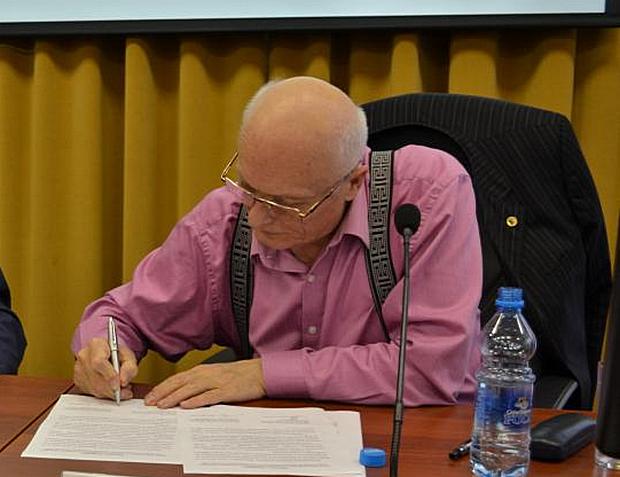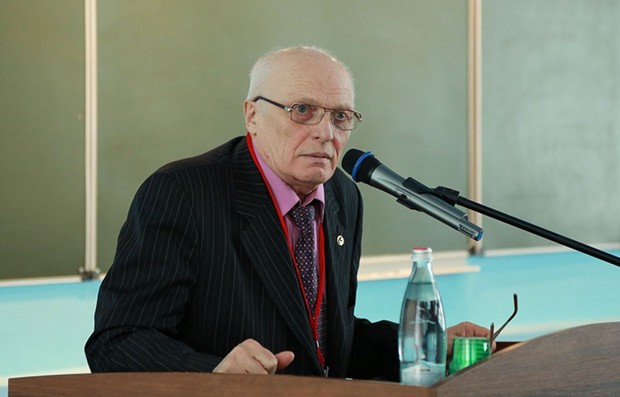‘Putin listened to Belousov, who recommended him a strategy of Stolypin Club’
The academician of the Russian Academy of Sciences is dissatisfied with the actions of the Central Bank of Russia and offers a working model of evolutionary economics
In the framework of the recently held in Kazan Russian Summer School of the young researchers of the evolutionary and institutional economics, the correspondent of Realnoe Vremya managed to talk with one of the leading lecturers of the school, an academician of RAS, Doctor of Economic Sciences Vladimir Mayevsky. He is a specialist in the new field of fundamental economic science – evolutionary macroeconomics. Besides, he is actively involved in the Russian macroeconomic policy.
Evolutionary economics is a working model
Mr Mayevsky, you are one of the leading experts in Russia on evolutionary economics. But this science stands apart from the general economic mainstream, including the model DSGE (Dynamic Statistical General Equilibrium), the accounting of expectations and the output gap, inflation targeting, etc. Evolutionary economics is very different from such mainstream, suffered loss in the global economic crisis of 2008-2009. Is the model of evolutionary economy the right direction in economic science for us?
In fact, each specialist tries to praise his research area. Personally I can say some compliments in favour of the evolutionary economic theory. It allows you to see the processes that actually exist in the world. It is interesting by the fact that its assumptions are not artificial. Of course, it has some simplification of reality, but it has no any special fictional world that is in the DSGE models. This fact suggests that the direction of 'evolutionary economics' is promising.
For example, the term 'technological paradigm' introduced by Sergey Glazyev has firmly entrenched in the usage and everyone knows what it is. There should be a change of patterns. The future of our country depends on whether we will be able to overcome the investment and innovation pause and to enter the sixth technological paradigm because the developed countries are already entering the sixth technological paradigm but we are lagging behind. From this point of view, we can look at the situation in the country and see a very bad picture with low growth, low investment in fixed capital. But without this we can't even dream about the sixth paradigm. But this is one side of the issue. What I do is an attempt to create a tool that can help to analyze the processes in the monetary sphere, in the investment activity, etc. It is very important. Because the models of the Orthodox mainstream, like the DSGE, they are based on the fact that if you don't adjust, do not set on certain settings, it will show nothing good. There are a lot of assumptions, and, most importantly, these assumptions are artificial. But in models of evolutionary economics, if we apply the assumptions we simplify the reality but do not replace real processes with artificial ones.

We all know that money circulate, we have learned to calculate the velocity of circulation of money, to calculate the demand for money. But we don't see those routes on which money move
That is, your models, they are similar to the macroeconomic model of Harrod-Domar, which strictly sets certain proportions needed for long-term economic growth?
Yes, after all, it was a more physical model, it was clear to people, and though worked roughly but gave results.
Evolutionary economics, it turns out, is the new reinterpretation of these working models, with the inclusion of additional factors?
Yes, there is a mechanism that we have managed to see, when we found the very same switching mode of production, i.e. the ability of the investment sphere to work periodically at one moment — on itself, at the next — on production. When we build such model, it was found that it discovered the routes that cash and non-cash money in the economy were moving. We all know that money circulate, we have learned how to calculate the velocity of circulation of money, to calculate the demand for money. But we don't see those routes that money move. Here we are like the doctors, like an English physician William Harvey, who 400 years ago discovered the blood circulation in human body. Earlier it was thought that blood is created somewhere near a liver, it is absorbed by a body and remains there, and liver creates a new portion of blood. Harvey proved that blood actually circulates in the two systems of vessels (arterial and venous blood). We have managed to see a similar mechanism of money circulation through the major trunk flows in the economy. We have modelled this mechanism mathematically. As a result, the model based on a realistic abstraction, which was not visible until we found the very same shifting mode, worked out. Now we can explore the US economy, the economy of the USSR. One problem in the current monetary policy has been solved. The article about the solution to this problem called 'Monetary mechanisms and model of the switching mode of reproduction' was published in the latest September publication of the journal 'Economic matters', besides me there are three other authors — Andryushin, Malkov, Rubinstein.

It allows you to see the processes that actually exist in the world. It is interesting by the fact that its assumptions are not artificial
How to ease the monetary policy in the right way
By the way, about the question of current monetary policy. Now many people say that the head of the Central Bank of the Russian Federation Elvira Nabiullina has handled with a very strong shock in the form of triple falling in oil prices, which did not take place since the dissolution of the USSR. That time, as you know, a strong drop in oil prices, as Yegor Gaidar wrote in his book 'Death of the Empire', broke the Soviet Union. And the very same power shock has happened recently, but nevertheless, the economy has survived, inflation has been curbed, in August, for example, it was zero. So, is this highly rigid policy of the Central Bank adequate in current realities? Indeed, lending has virtually stopped, there is no significant growth there, although the banks have enough money and they are putting them on the deposits to the Central Bank.
Your question already contains some answers. Indeed, bankers take money to the Central Bank, there is even a liquidity surplus. This is because the interest on deposits is quite high. But if you lend to the real sector, then, first, you must be guided by the key rate of the Central Bank of Russia. But the key rate is quite high, plus you have to do a markup that reflects the riskiness of lending to the real sector. It turns out at least 16% and this is the best offer. In reality, the interest is even higher. Also, there is pressure from the Central Bank, which considers lending to the real sector quite risky. You have to reserve a lot of money under such loans.
As a result, it is very unprofitable to lend to the real sector for the banks, because they have to allocate, for example, 50% of the issued amounts for reserves. It turns out that it is better to put money on deposit in the Central Bank under 10-11%, which is much more reliable. So I think that today the Central Bank should listen to alternative points of view like Putin listened to Belousov, who recommended him the strategy of 'Stolypin club' aimed at easing monetary policy. In the article of 'Economic matters', we support neither ones nor the others. Neither Kudrin nor Glazyev with Titov — we just show how the Central Bank should have acted in the case of easing of monetary policy so that the switch to the lending (investing) of the real sector of the economy took place. Then our model turns out to be useful, it is the theoretical construction that suddenly begins to shoot.